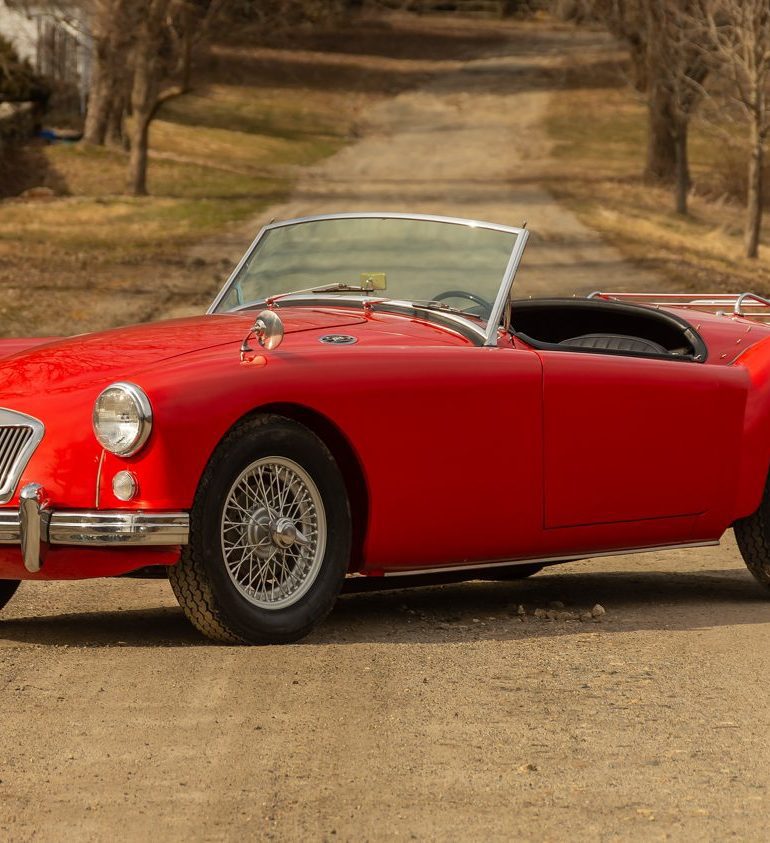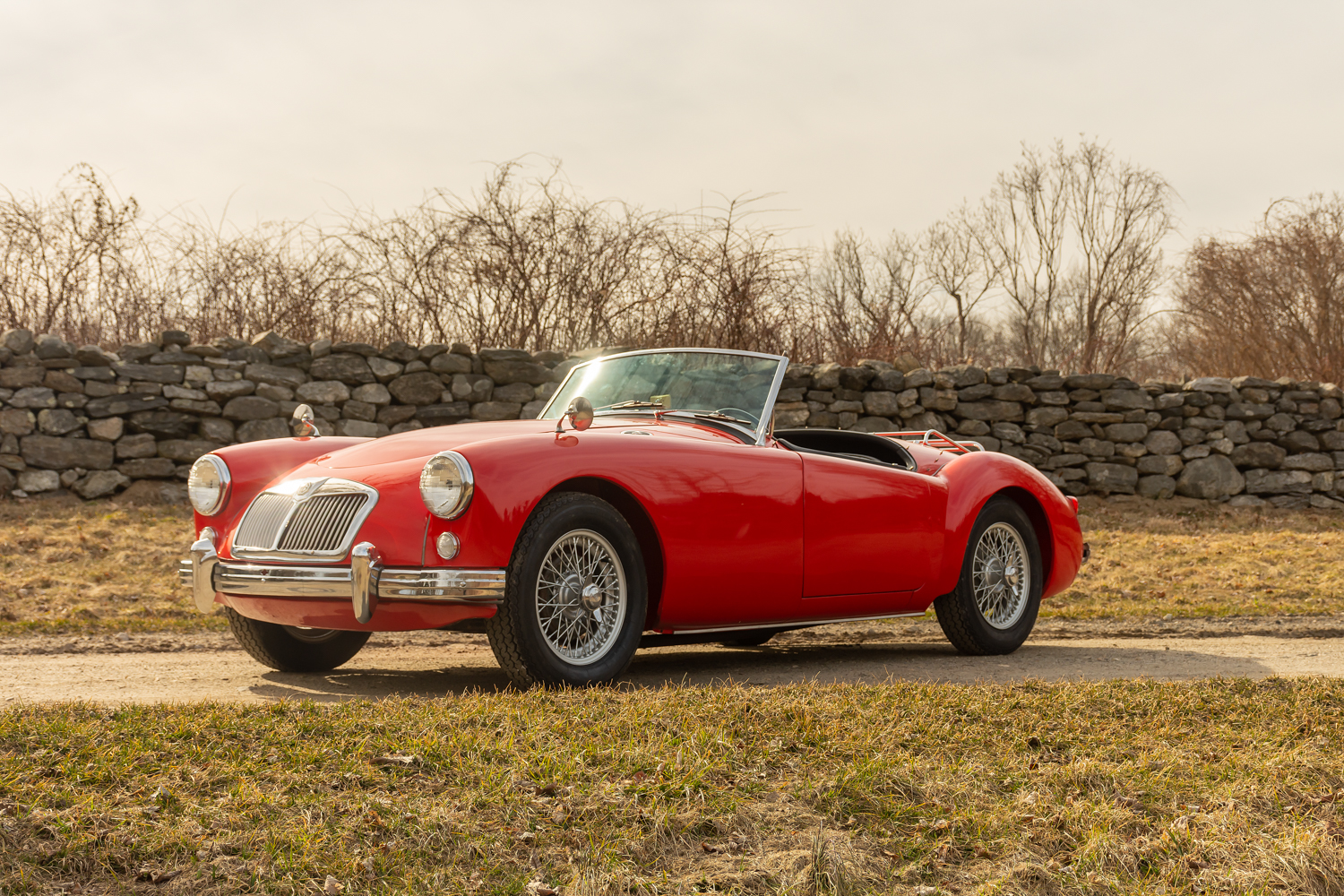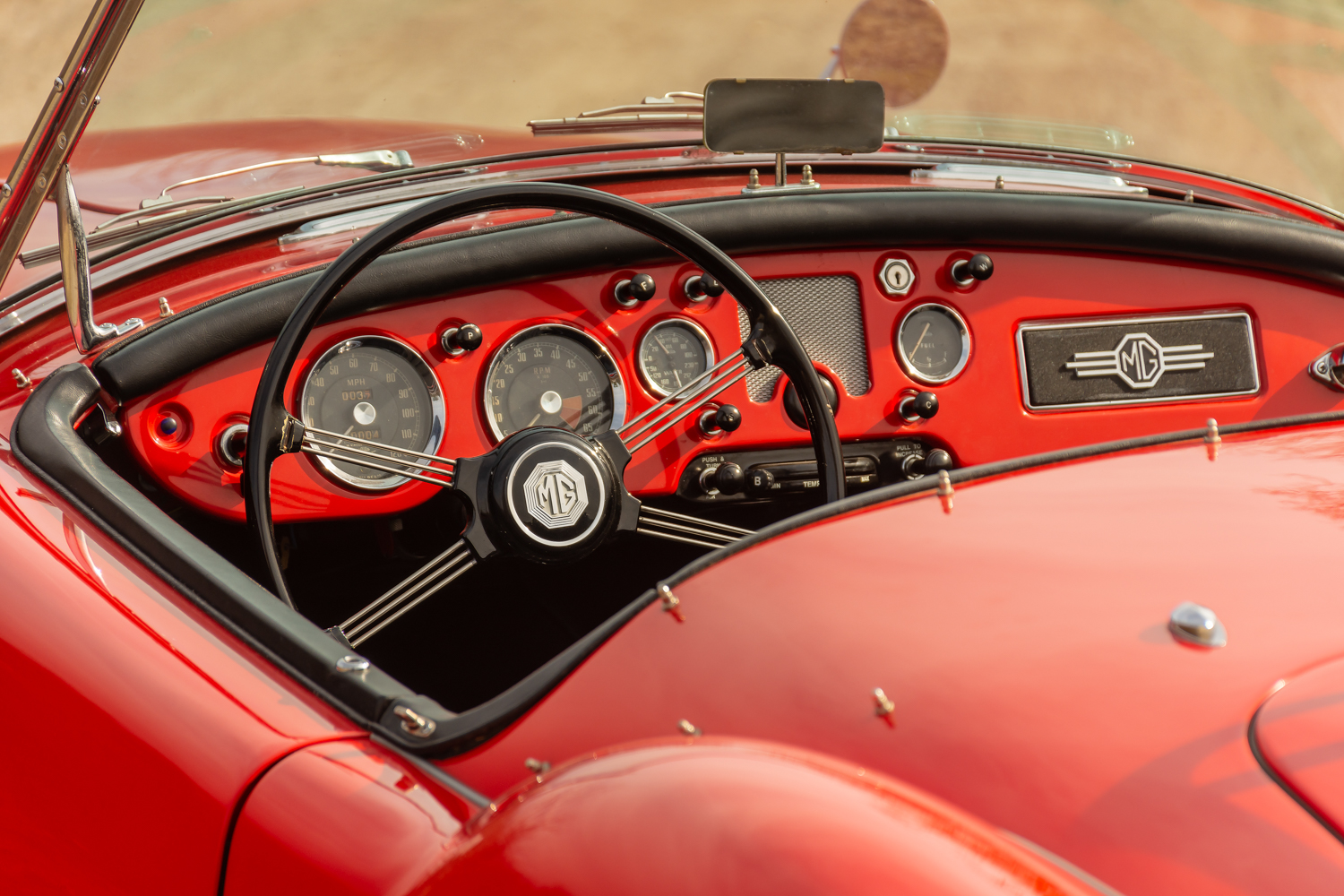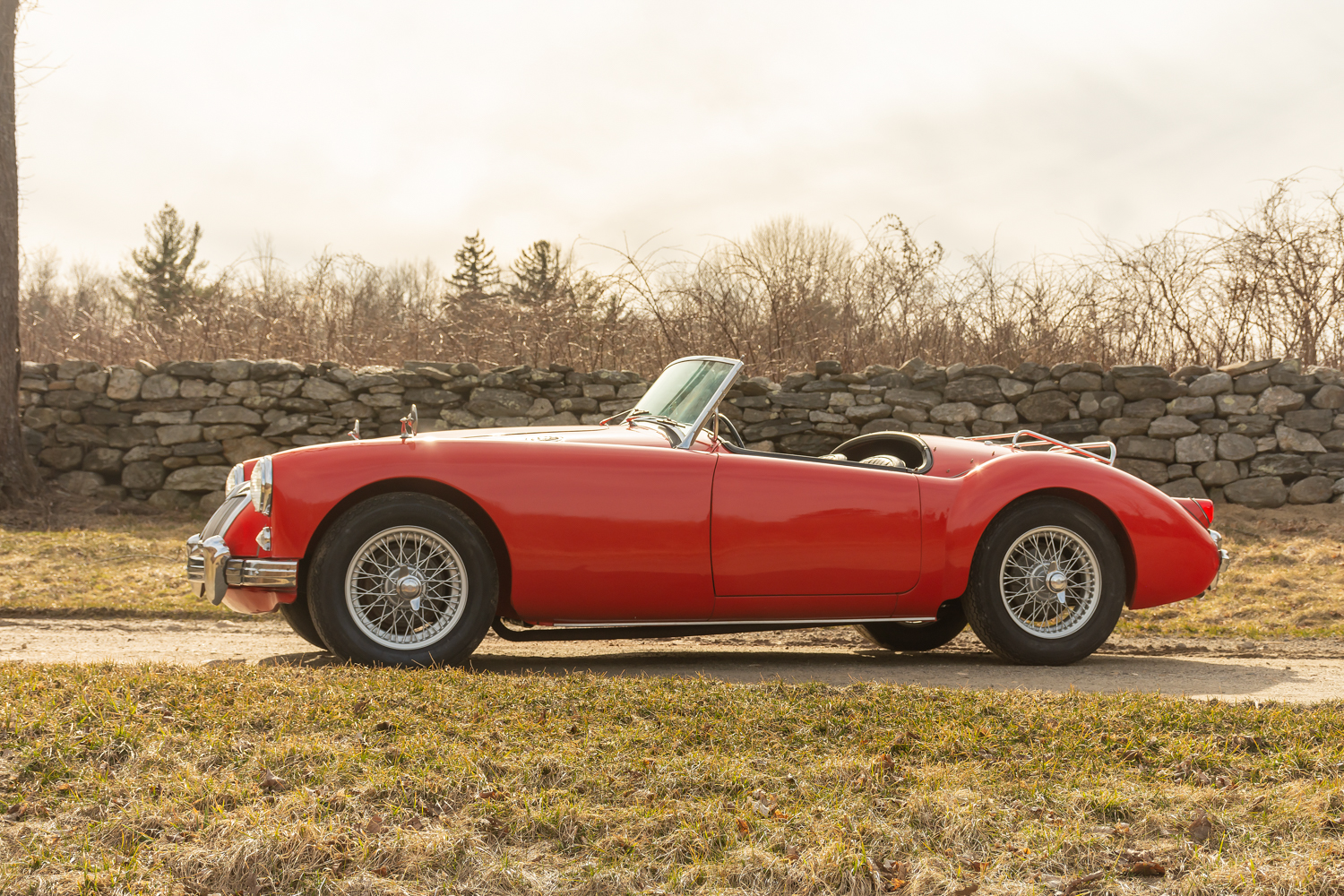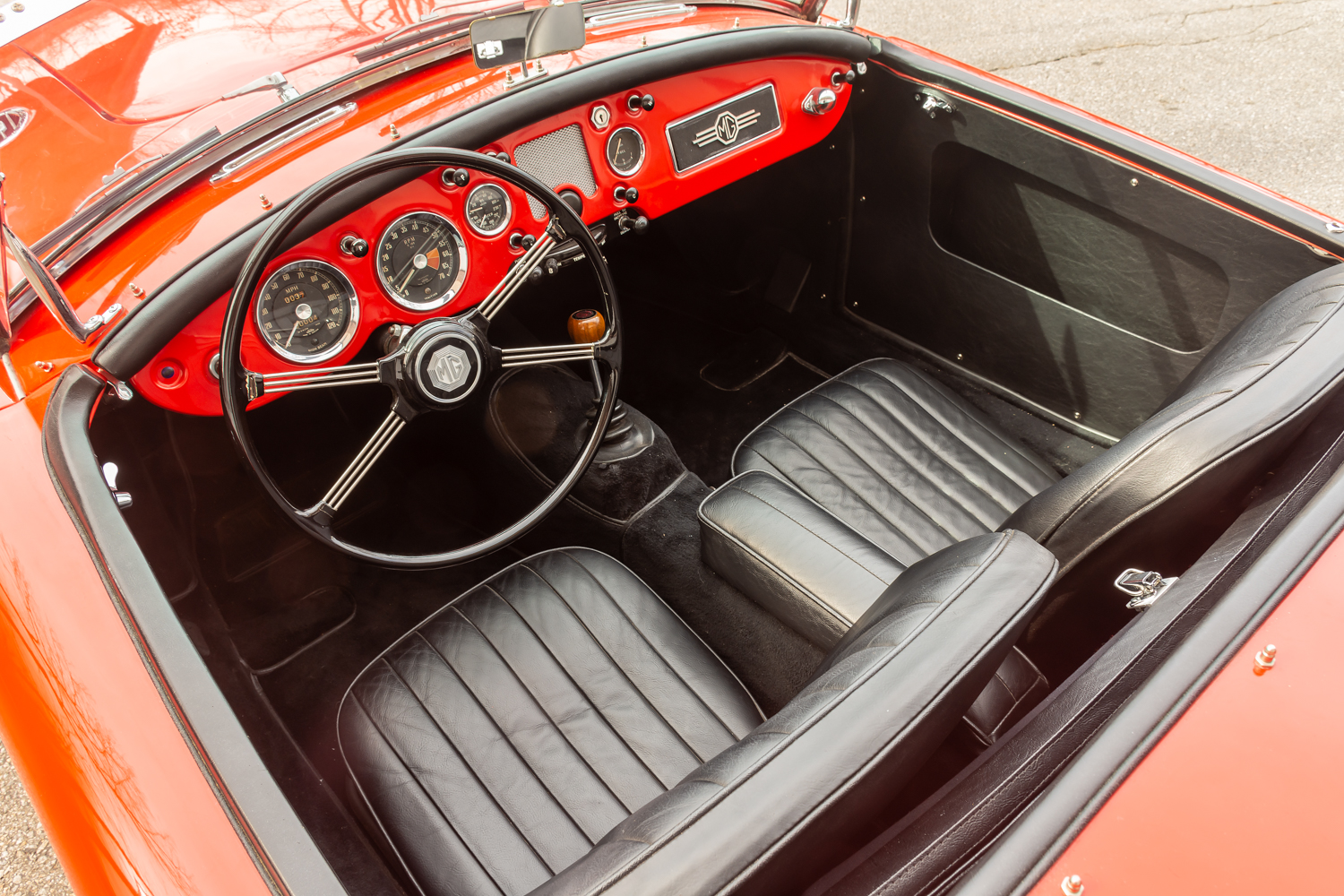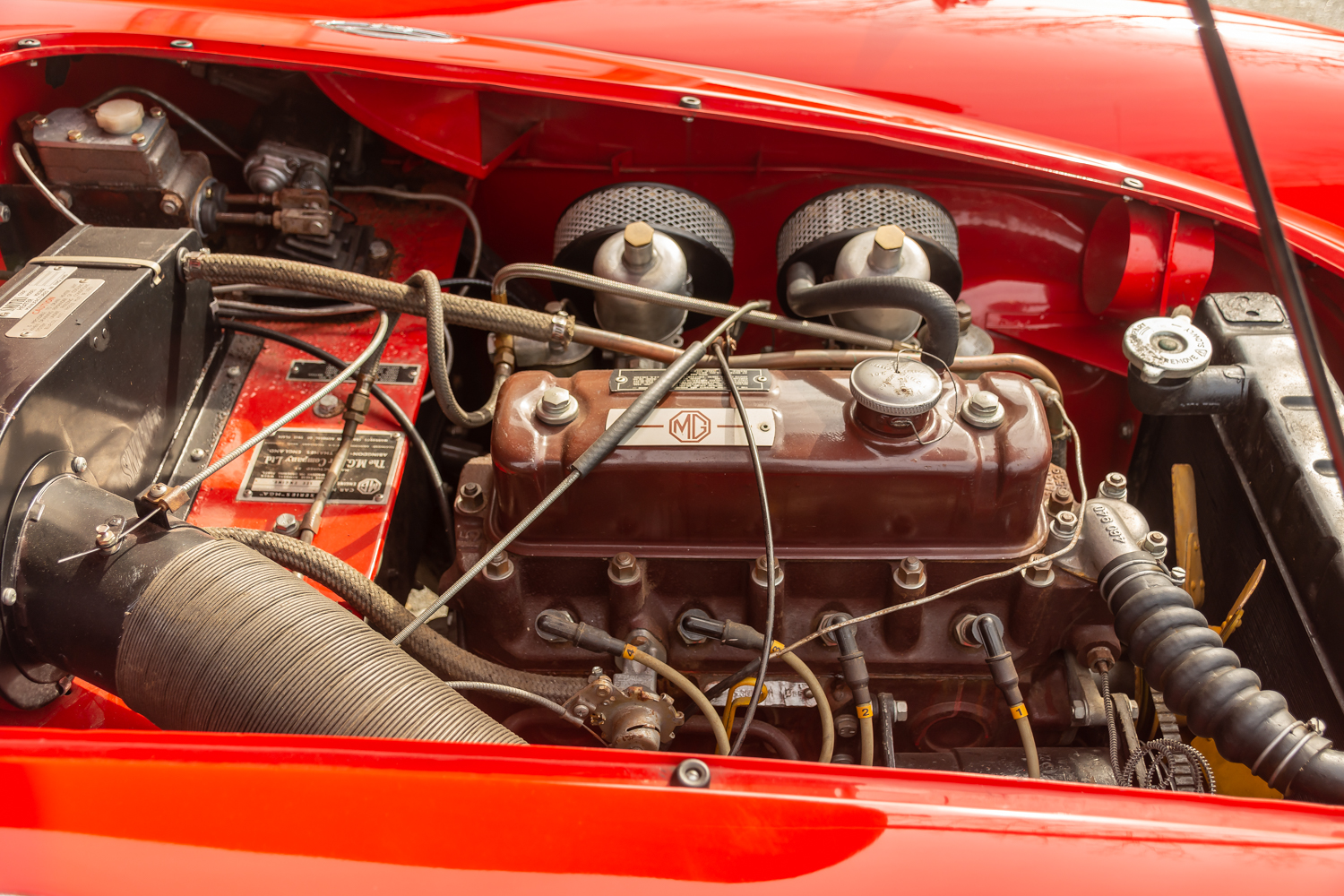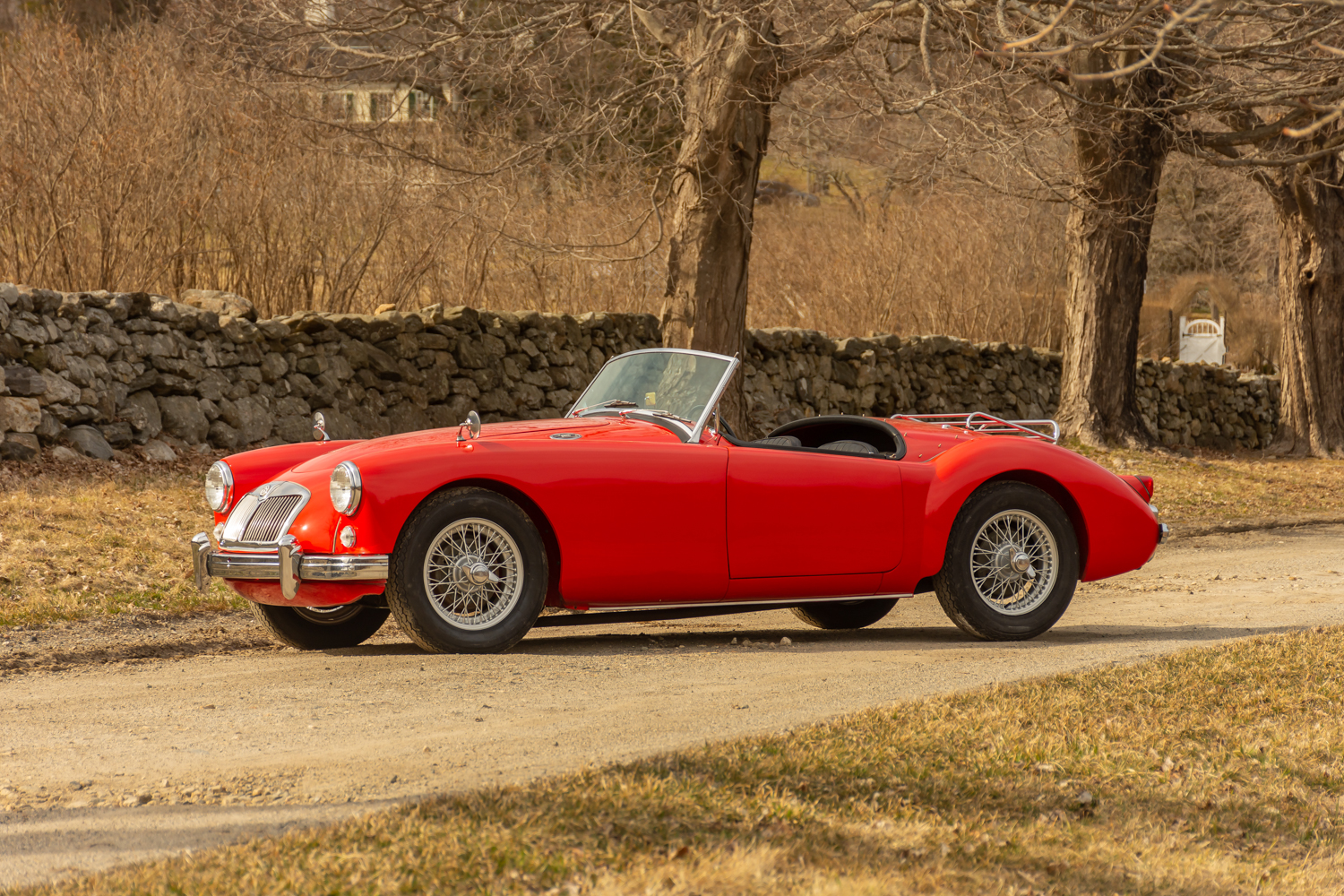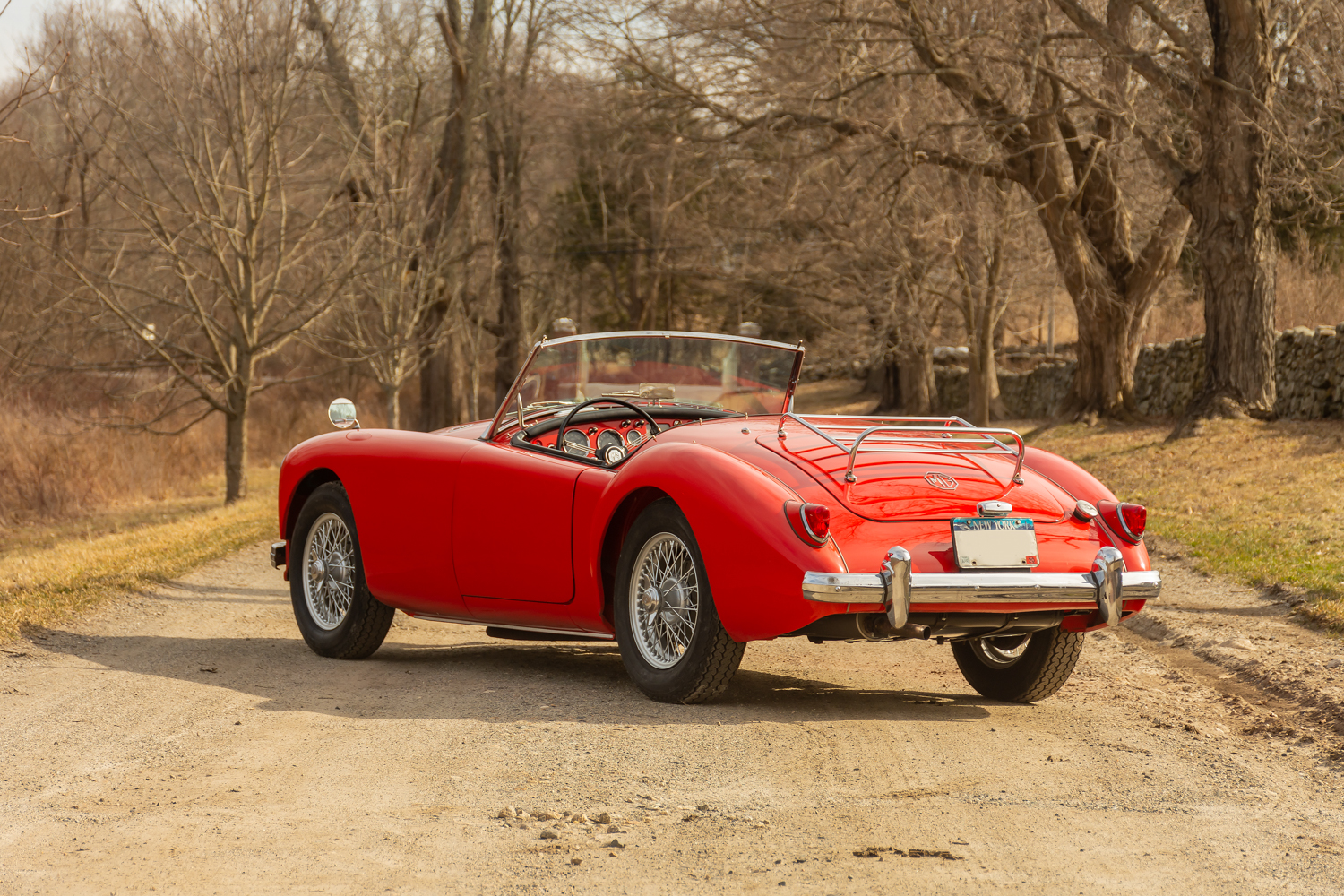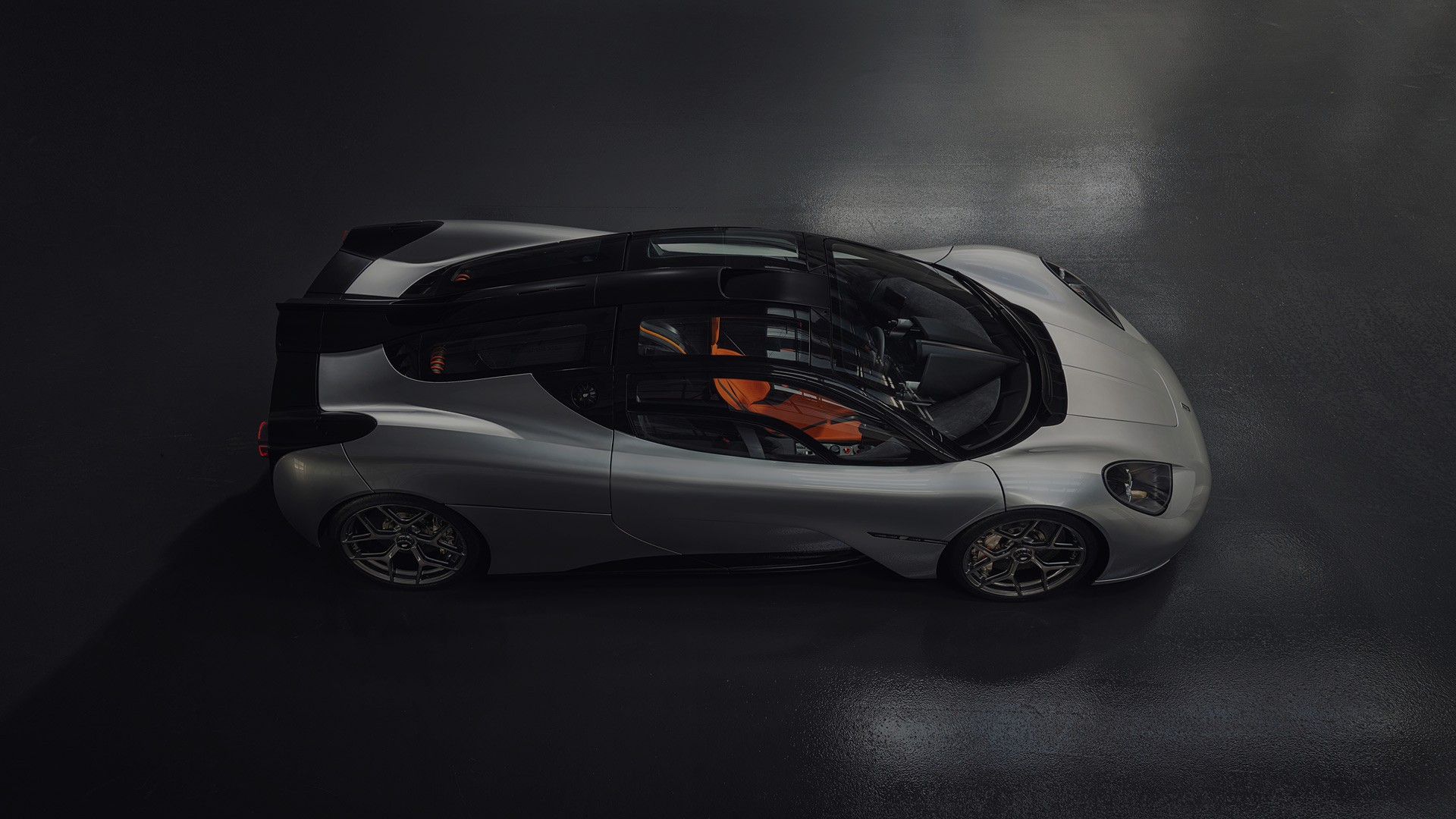The ubiquitous MGA. In 1955, it marked a radical change from the aging lines of the MG TF, a style that had been carried on with minor changes since before WWII.
Where did this quantum leap spring from?
George Phillips was a photographer for Autosport magazine, who not only photographed cars he raced them.
In 1948, Phillips raced his MG TC special at Goodwood and won his class. Then, at the first post-war running of the 24 Hours of Le Mans, with co-driver R.M. Dryden, the duo were holding their own until they were disqualified for receiving outside assistance.
Phillips returned to the Circuit de la Sarthe, in 1950, with his special and co driver Eric Winterbottom finishing 18th overall and second in class.
But changes were coming and the TC special was getting a bit long in the tooth.
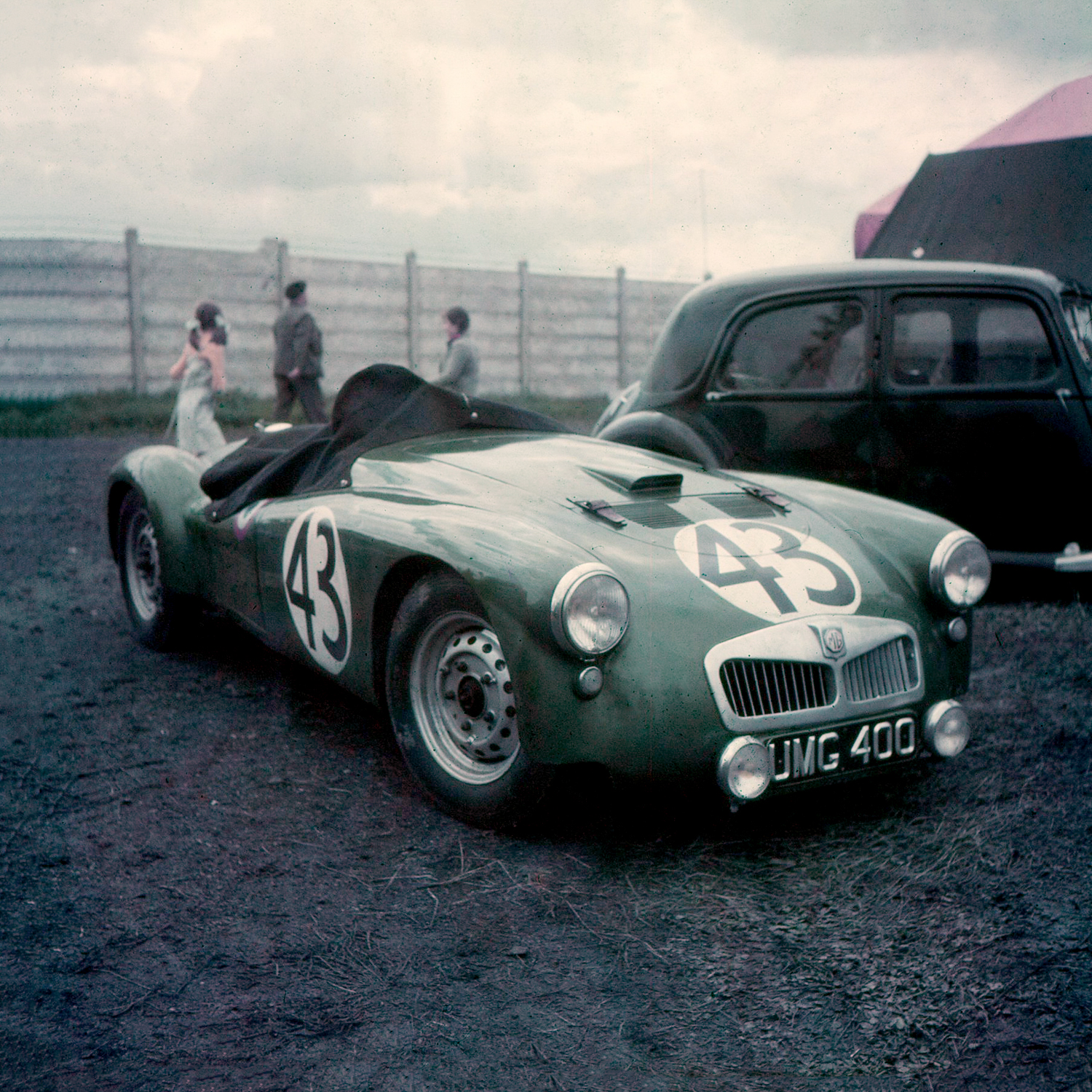
Phillips commissioned a new more slippery body to cover his MG’s underpinnings. Syd Enever an MG designer was tasked with creating the new more aerodynamic body. What he produced was the precursor to the MGA.
But his creation had its problems. Phillips’ new racer had a modern envelope body, but underneath was the aging TD powertrain and chassis. One lingering problem was that due to the TD’s ladder-style frame, the driver sat very high in the car. Still Phillips and co-driver Alan Rippon contested the 1951 Le Mans, unfortunately finishing their race only 80 laps in.
Subsequently, a road-going prototype was built in the style of the Le Mans racer, but with a new, wider frame, lower seating position and higher doors.
The new car was turned down by the chairman of BMC, Leonard Lord, because at the time he made a deal with Donald Healey to produce the Austin-Healey.
However, sales of the T-series cars were failing, so it was finally decided to put the new design into production. The new car, making its debut at the Frankfurt Motor Show was to be called the MGA. Period advertising calling it “The first of a new line.”
The body on frame design contained an inline, four-cylinder engine from the MG Magnette that was attached to a four-speed gearbox. An independent suspension with coil springs and wishbones, with rack and pinion steering, was used at the front, while the rear received a rigid rear axle with semi-elliptical springs.
The MGA was built from 1955 until 1962 when it was replaced by the MGB.
Over 100,000 MGAs were built in various guises, but only 5,869 cars were sold in the home market (the lowest percentage of any British car), all others were exported. Even if “Blighty” didn’t care for the little blighter, the “A” found love in the rest of the world.
Now, in 2019, on a partly cloudy 47º day I’m given the keys to a red 1959 MGA, I have no other choice but to go for a drive.
This is a pure, elemental sports car. No roll up windows, no radio. Just two seats, a banjo-style steering wheel, four Jaeger gauges and four forward gears…pure heaven.
Turn the key, pull the starter and it’s alive! There is the axiom, “there is no replacement for displacement,” but four cylinders is all you need to have fun in a MGA. It makes all the right sounds, there’s the gear whine, the rorty exhaust note, the squeaks and rattles of an old English car, it’s just what the doctor ordered. So what if it’s cold, plenty of heat comes in from the engine compartment and it’s a sports car where you need to be made of sterner stuff. So what if hitting a pothole rattles your fillings, it’s a fair tradeoff for getting to drive this little Brit-beast on a country road.
The MGA is the kind of sports car that you get a thumbs-up, instead of the middle finger, from pedestrians and other drivers. It just puts a smile on everyone’s face especially the driver of the A.
The MGA is not fast, big deal it’s great fun on a twisty country road, it doesn’t need to visit a highway. It’s not expensive, fantastic! It’s a great way to get into the world of vintage sports cars. And it’s not overly rare, so there are enough to go around.
The MGA lets you enjoy a trip to nowhere, without any cares and no timetable and getting there is all the fun.
Thank you Britain. I don’t have a clue as to why you didn’t fall head over heels for this groovy little car, ’cause we are sure having fun with them over here.
Thanks to Nick Soprano and Motor Classic and Competition for letting me take a cool ride back to the ’50s.
SPECIFICATIONS
| Length | 156 in. |
| Width | 57.25 in. |
| Height | 50 in. |
| Wheelbase | 94 in. |
| Front track | 47.5 in. |
| Rear track | 48.75 in. |
| Engine | BMC Austin, B-series, 1.5 liter, Inline-4, 2 valves per cylinder |
| Displacement | 1489-cc / 90.9 cui |
| Bore | 73.025/ 2.875 in |
| Stroke | 88.9mm/ 3.5 in |
| Compression | 8.3 : 1 |
| Horsepower | 72 hp @ 5500 rpm |
| Torque | 77.4 ft-lb @3500rpm |
| Transmission | Four-speed, non-synchro 1st. |
| Price now | $17,000.00 – $39,900.00 |


